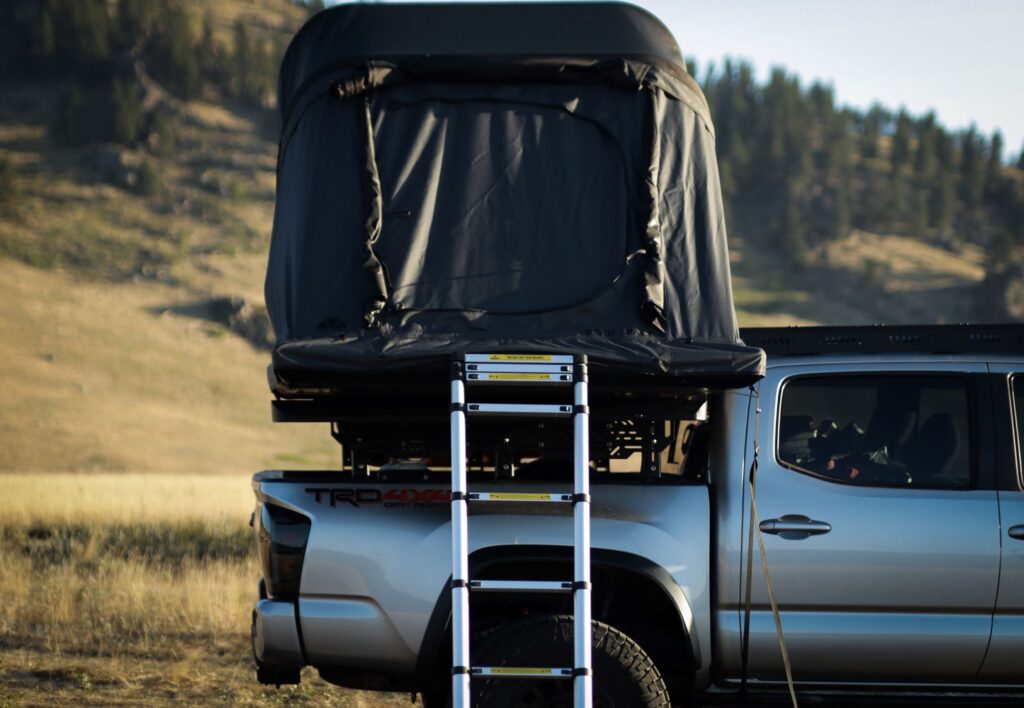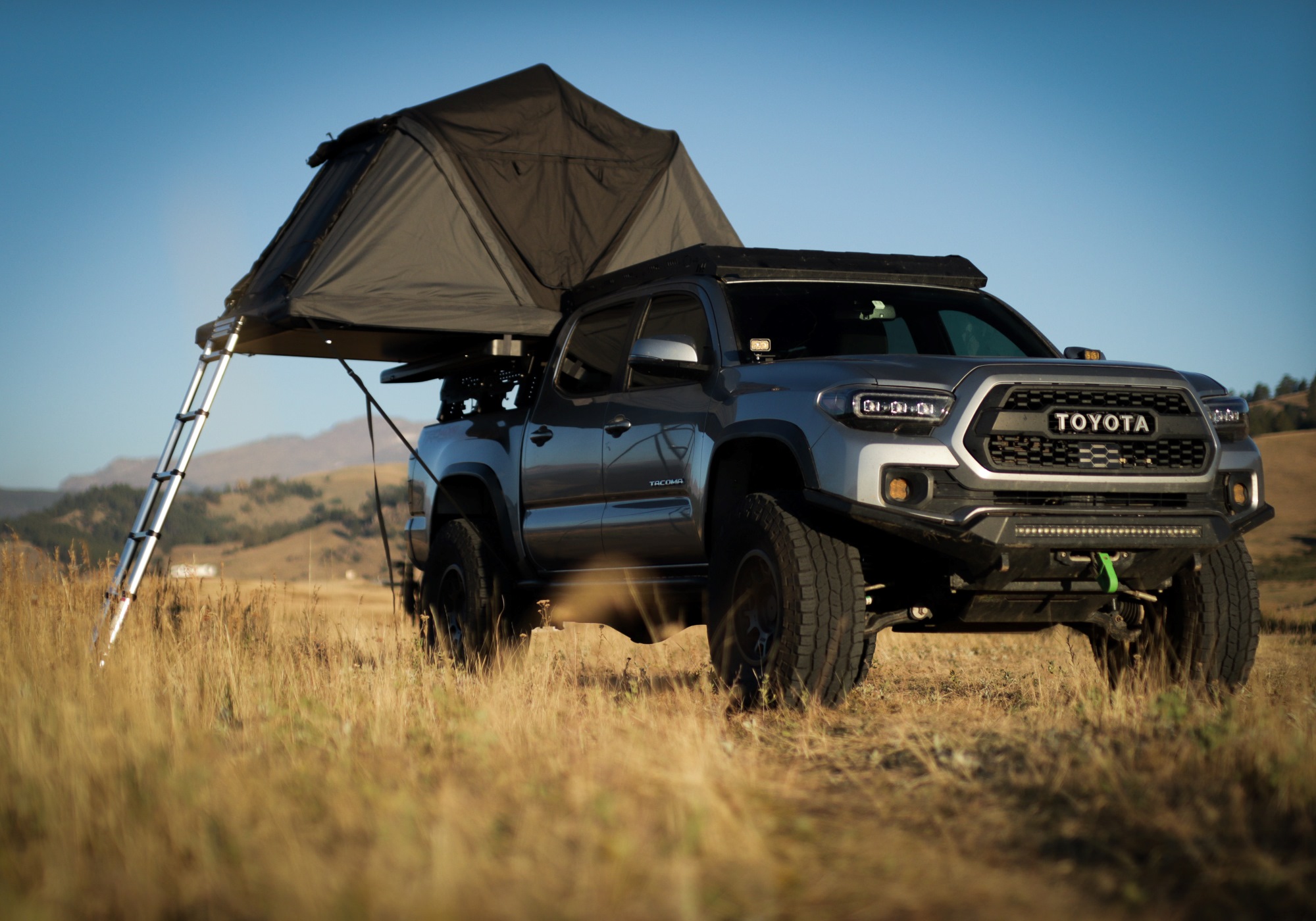For the past few years, the iKamper Skycamp Mini 2.0 has been my trusted companion on countless adventures, from the Rocky Mountains to the deserts of the Southwest. However, after experiencing the new Roof Space 2.0 tent, I realized it was time for an upgrade. While the iKamper served me well, the Roof Space 2.0 offers a range of features that have significantly improved my overlanding experience. Here’s why I made the switch.
The Shortcomings of the iKamper Skycamp Mini 2.0
Let me start by acknowledging that the iKamper Skycamp Mini 2.0 has been a reliable tent in many ways. It’s compact, durable, and has been through some tough conditions with me. However, over time, certain limitations became more apparent, especially when compared to newer models like the Roof Space 2.0.
Lack of Modern Conveniences: While the iKamper is durable and functional, it lacks some of the modern features that make camping more convenient and comfortable. For example, storage solutions are minimal, and there’s limited ability to integrate additional accessories, which meant I had to bring extra gear and storage solutions, adding to the overall bulk and hassle during trips.
Ventilation Issues: One of the biggest challenges I faced with the iKamper was poor ventilation, especially in humid or rainy conditions. Despite opening the windows and vents, I often woke up to a damp interior, with condensation being a constant problem. This made longer trips uncomfortable, as I had to frequently air out the tent to prevent mustiness.
Space Constraints: While the Skycamp Mini 2.0 is designed to be compact, the interior space started to feel cramped, especially on extended trips. There wasn’t enough room to comfortably sit up or move around inside, which became a hassle on rainy days when staying inside the tent was necessary. The lack of headroom and overall space made it feel restrictive, particularly when compared to the more spacious Roof Space 2.0.
Setup Time and Effort: Although the iKamper is marketed as easy to set up, I found that it often took more time and effort than expected. The process of securing the tent properly could be cumbersome, especially after a long day of driving. Over time, the latches and struts became a bit finicky, adding to the setup time and frustration.

Why I Chose the Roof Space 2.0 Tent
- Real-World Setup Ease: The first time I set up the Roof Space 2.0, I was blown away by how fast and effortless it was. Picture this: I roll into camp late after a long day on the trail, tired and hungry. With the iKamper, I’d be fumbling with latches and struts for at least 10-15 minutes. But with the Roof Space 2.0, it’s literally up and ready in under a minute. The gas strut-assisted mechanism is a game-changer—I can have it set up while my coffee is brewing.
- Comfort and Space Where It Matters: One of the first things I noticed with the Roof Space 2.0 was the interior space. It feels more open, more breathable. On a recent trip through the Pacific Northwest, I had plenty of room to spread out, even with all my gear stowed inside. The improved headroom means I can actually sit up comfortably without hitting my head on the ceiling—a small detail that makes a huge difference after a long day on the road.
- Ventilation and Weather Performance: I took the Roof Space 2.0 out on a particularly wet weekend in the Cascades. The ventilation system kept the air circulating beautifully, and I woke up dry, even after a night of steady rain. The waterproof fabric held up without a hitch, and there was no more of that dreaded condensation that plagued me with the iKamper. The UV-resistant material also held its own during a scorching day in Moab—no fading, no signs of wear.
- Durability That Inspires Confidence: The Roof Space 2.0 feels rugged in the best possible way. The materials are top-notch, and I’ve already put it through the wringer—dust storms in Utah, heavy winds in Wyoming, and it’s held up like a champ. The iKamper, while durable, started showing its age after a few years. The Roof Space, on the other hand, feels like it’s built to last.
Conclusion
Switching from the iKamper Skycamp Mini 2.0 to the Roof Space 2.0 wasn’t an easy decision—I have a lot of great memories with that tent. But after using the Roof Space 2.0 on multiple trips, I can honestly say it’s the best decision I’ve made for my overlanding setup. The ease of use, extra space, and thoughtful features have made my adventures more enjoyable and less stressful. If you’re on the fence about upgrading, I can’t recommend the Roof Space 2.0 enough—it’s everything I didn’t know I was missing.
For more details on the Roof Space 2.0 tent, check out the Roof Space website.




